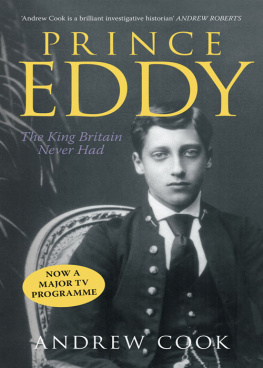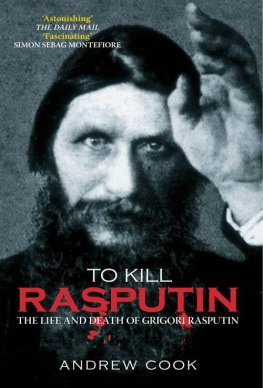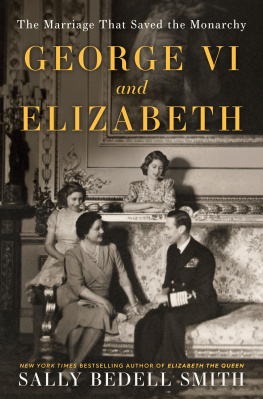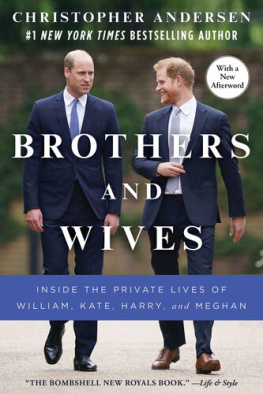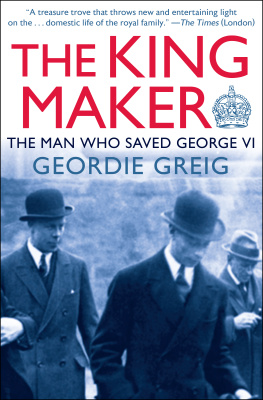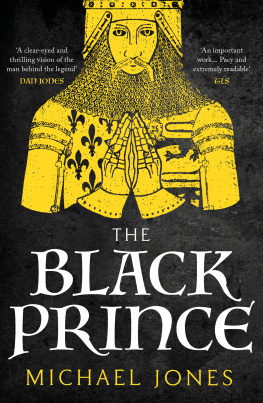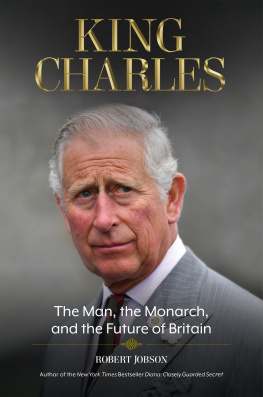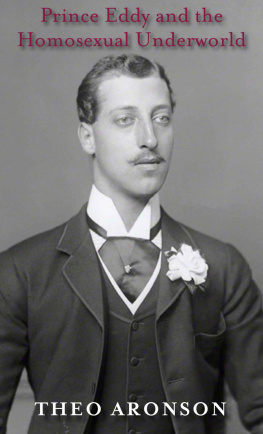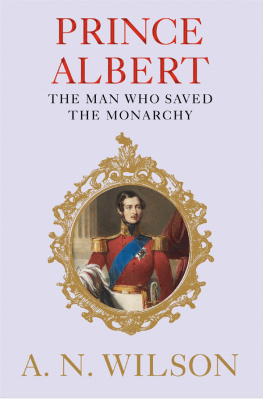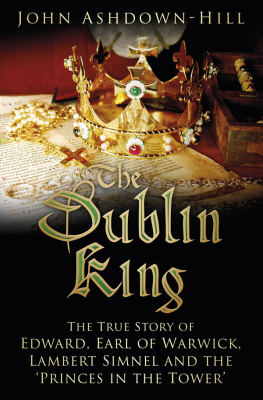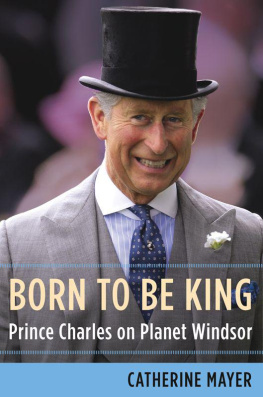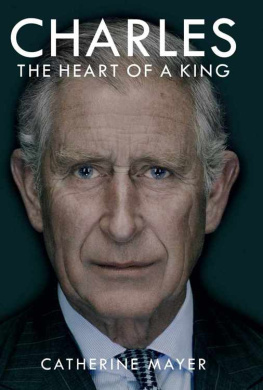Contents
I have many debts to acknowledge in the preparation of this book. My particular thanks go to the researchers who assisted me: Michel Ameuw (France); Jordan Auslander (USA); Ramesh Chandra (India); Terri McCormack (Australia); Stephen Parker (UK); and Graham Salt (UK).
Special gratitude is also owed for the assistance given by Dr Michael Attias, Major P.J.C Beresford (Regimental Curator, The Kings Royal Hussars); Michael Foy (Queens University, Belfast); Adam Green (Assistant Archivist, Trinity College, Cambridge); Robin Harcourt Williams (Librarian & Archivist to the Marquis of Salisbury); Penny Hatfield (College Archivist, Eton College); Lord Romsey; Reverend Sergio Pagno (Archivio Segreto Vaticano); Hannah Renier; Andrew Roberts; John Ross (Specialist Crime Directorate, New Scotland Yard); Mark Tami MP; Caroline Theakstone (Hulton Getty Archive); Hugo Vickers; and Dr C.M. Woolgar (Archivist, University of Southampton). Furthermore, I would like to thank Bill Locke at Lion Television (Executive Producer of the Channel 4 film Prince Eddy) whose support and enthusiasm enabled the project to go forward. I am also indebted to Ralph Lee at Channel 4 for commissioning the story and thus enabling the new evidence surrounding Prince Eddys life to be presented to a wider audience. Thanks must also go to Producer/Director Garry Hughes and Associate Producer Melisa Akdogan for their part in making Prince Eddy such a groundbreaking film.
Finally, a special thank you to Caroline Beach, Monica Finch, Patrick Ooi, Bob Sheth and Chris Williamson, for all their hard work at various stages of this project.
O ne needs to go back to the Middle Ages, to Richard III and John, to find a significant royal figure whose reputation has been so besmirched by the retrospective historical record as Prince Albert Victor, Duke of Clarence and Avondale. Eddy, as he was known throughout his life, was the eldest son of Edward VII and heir presumptive to the throne for the twenty-eight brief years of his life.
Eddy was as popular and charismatic a figure in his own life-time as Princess Diana a century later. As in her case, his sudden and unexpected death in 1892 resulted in public demonstrations of grief on a scale rarely seen at the time. A century after his death, it was even rumoured (as in Dianas case) that he had been murdered to prevent him tainting the reputation of the monarchy. Had he lived, he would have been crowned King Edward VIII in 1911, ushering in a profoundly different style of monarchy from that of his younger brother, who ultimately succeeded as George V.
Eddys life was virtually ignored by historians until the 1970s, when myths began to accumulate and his character somehow grew horns and a tale. As a result, he is primarily known today as a suspect in the Jack the Ripper murders of 1888 and for his alleged involvement in the Cleveland Street homosexual brothel scandal of 1889. Like Richard III and John, whose reputations have very much been determined in the contemporary mind by William Shakespeare, Eddy has certainly been shaped by popular films such as Murder by Decree (1976), Jack the Ripper (1988) and From Hell (2001).
For those who have seen these films and read Ripper books by Stephen Knight and Melvyn Fairclough, it may come as something of a surprise to learn that rumours of Eddys involvement in the Ripper episode can be traced back no further than four decades. It is now acknowledged by most serious researchers of the Ripper killings that the creator of the Eddy Ripper myth was eighty-five-year-old Dr Thomas Stowell, whose article Jack the Ripper A Solution? appeared in the Criminologist (Vol.5, No.18) in November 1970. His article painted a picture of a crazed syphilitic murderer roaming the East End, vainly pursued by his doctor. The killer, referred throughout the article as S, was apparently a patient of the Royal Physician Sir William Withey Gull, who was convinced that S was the Ripper and strove to have him certified insane. The article also provided a potted biography of S, which quite clearly points the finger at Prince Eddy. Not unsurprisingly, the media seized on the story, which was very soon reported throughout the world as effectively naming Eddy as the murderer. Stowell, stunned by the degree of attention the article received, wrote to The Times in panic, lamely denying that S was Eddy. Before he could be subjected to further scrutiny, Stowell died on 8 November 1970, and his son tried to defuse the furore by destroying his papers. Although the article contained numerous factual errors and recycled several already established Ripper tales, the fuse had already been lit. Numerous others would follow in Stowells footsteps, each embellishing and refining the story. The more extreme and fanciful of these stories are examined in more detail in chapter 12.
For those reluctant to accept that Stowell was the creator of the Eddy Ripper myth, the coming to light of a little-known 1962 French biography, Edouard VII, by Philippe Jullian, must have seemed like manna from heaven. On p.171, the author boldly states that, on one occasion the police discovered the Duke in a maison de recontre the rumour soon gained ground that he was Jack the Ripper. Here, then, was a source that pre-dated Stowell by some eight years and seemed to be based upon some much earlier source.
However, according to the writer Colin Wilson, in August 1960 he had lunched with Stowell, who had propounded his Eddy theory in some detail. Wilson, who was at the time writing Encyclopaedia of Murder (published the following year), was not wholly convinced by the theory. However, that same evening Wilson related the story that Stowell had told him to the biographer and politician Sir Harold Nicolson. Although the Jullian book contains no index or source notes, its acknowledgements page contains the following sentence: In England it is to Sir Harold Nicolson, for allowing me to delve into his works and for telling me a number of hitherto unpublished anecdotes, that I am most indebted. So, after much twisting and turning, the trail finally returned to Stowell. From so little substance, so much has subsequently been made.
The eccentric theories possibly reached their nadir in 1991, when Melvyn Fairclough published The Ripper and the Royals. Reproducing extracts from a diary allegedly written by Ripper investigator Inspector Frederick Abberline of Scotland Yard, Fairclough not only tied Eddy into the Ripper murders, but implicated a host of others, including Lord Randolph Churchill. New Scotland Yard have subsequently expressed the view that the Abberline Diary is a forgery.
The fact that on each and every occasion a Ripper murder took place Eddy was not only out of London, but was attending functions in front of large numbers of people, seems to have escaped the attention of many writers determined to place him in the Ripper frame. Fairclough also took the theory that the cause of Eddys death had been murder rather than influenza to its illogical conclusion. In a tale that bore more than a passing resemblance to The Man in the Iron Mask, he claimed that Eddy had been kept a prisoner at Glamis Castle in Scotland to prevent him from ascending to the throne. He apparently died, still a prisoner, in 1933. Faircloughs book even offers proof of this theory by publishing a photograph of Eddy, aged forty-six, eighteen years after his official death. In order to subject this claim to scientific analysis, his photograph and one of Eddy taken in 1890 were presented to the forensic imaging expert Ken Linge BA, MSc, FBIPP. Linge is one of the UKs leading experts on facial mapping and a veteran Old Bailey forensic witness. The results of computer analysis using morphological, anthropometric and biometric techniques found numerous and significant differences between the two photographs, leading Linge to conclude that they were, without doubt, of two entirely different people.

